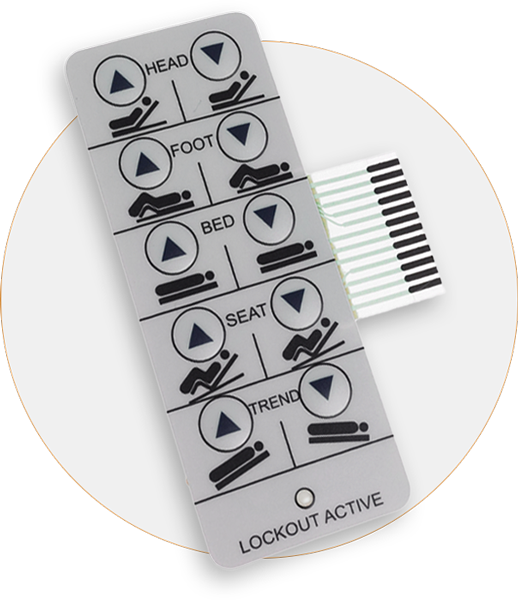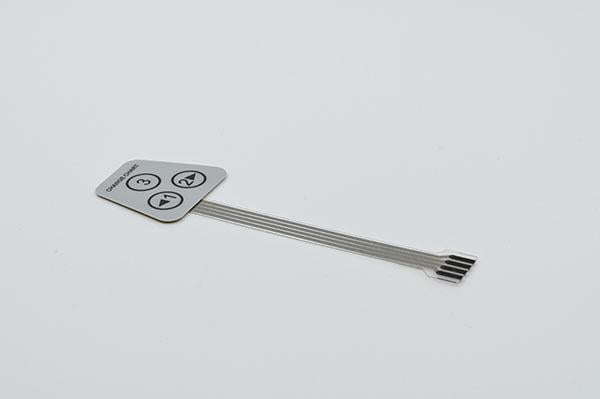If durability matters, sourcing from a seasoned membrane switch manufacturer is key.
If durability matters, sourcing from a seasoned membrane switch manufacturer is key.
Blog Article
Everything About Membrane Layer Switch Over: Understanding Its Style and Functionality
When you think regarding the control interfaces in modern-day devices, membrane switches often come to mind. These elements are extra than just switches; they blend design and capability flawlessly. Recognizing how they work and what makes them reliable can alter your viewpoint on everyday electronic devices. However, there are nuances to their layout and efficiency that you might not understand. Let's discover what sets membrane layer switches over in addition to other control systems.
What Are Membrane Buttons?

Their seamless nature makes them easy to tidy and immune to dirt and wetness, an essential attribute in numerous atmospheres. Membrane layer switches can also be customized pertaining to form, size, and graphics, enabling producers to create unique interfaces tailored to certain items. And also, they're lightweight and thin, which aids in decreasing the total bulk of tools. Overall, membrane layer switches play a substantial role in boosting individual experience throughout a large range of applications.
How Membrane Switches Work
When you press a secret on a membrane switch, it activates an uncomplicated yet efficient mechanism. The leading layer, frequently made of adaptable material, presses down onto a conductive layer below it. This activity bridges the space in between conductive traces, completing an electric circuit. As quickly as the circuit closes, it sends out a signal to the gadget's controller, which analyzes your input.
You'll discover that the responsive responses differs based upon the switch layout, offering either a soft click or a much more pronounced feedback. When you release the secret, the membrane layer returns to its original placement, reopening the circuit and stopping the signal. This procedure takes place practically instantaneously, ensuring a receptive customer experience.
Membrane buttons are popular due to their sturdiness and resistance to dirt and moisture, making them optimal for numerous applications, from house devices to clinical tools. Recognizing this operation assists you appreciate their widespread use.
Secret Components of Membrane Switches
Comprehending the vital components of membrane switches is fundamental for grasping their performance and layout. At the core, you'll discover the graphic overlay, which offers the aesthetic user interface for customers. Below that, there's a spacer layer that divides the circuit layers, making sure that they do not make contact up until pressed. The circuit layer is where the magic occurs; it is composed of conductive traces that finish the circuit when you press the button. One more vital aspect is the sticky backing, permitting the button to stick to surface areas safely. Ultimately, the safety layer shields versus environmental factors and wear, extending the switch's lifespan. Each component plays a significant role in guaranteeing reliable efficiency and user communication. By comprehending these parts, you'll get insight right into how membrane changes operate and their significance in numerous applications.
Products Made Use Of in Membrane Switch Design
The performance and toughness of membrane layer switches over greatly depend upon the materials used in their design. You normally experience polyester and polycarbonate as primary substrates due to their excellent toughness and adaptability. These products resist scratches and chemicals, making them suitable for requiring atmospheres.
The conductive layers typically use silver or carbon, chosen for their dependability and conductivity. membrane switch manufacturer. Silver offers exceptional performance, while carbon is a cost-effective option. For the overlay, you may consider a matte or glossy surface, depending upon your aesthetic needs and customer experience
Make specific to select adhesives that hold up against environmental elements like temperature and moisture. Choosing the ideal products will certainly ensure your membrane switch stands the test of time.
Style Considerations for Membrane Layer Buttons
While designing membrane buttons, it's essential to take into consideration different aspects that affect their capability and customer experience. Begin by concentrating on the layout and switch size; ensure they're user-friendly and very easy to navigate. Take into consideration the tactile responses you wish to provide-- will customers require a recognizable click or a softer touch? Furthermore, consider the materials you'll use, as they'll affect durability and looks.
Don't overlook the graphic layout; clear labeling and shade comparison are significant for exposure. Verify your style suits environmental factors, like moisture or temperature level variants, which could impact performance. Bear in mind the relevance of testing models with real customers to gather feedback and make required modifications. This iterative process helps you improve the design, verifying it satisfies both useful and aesthetic demands efficiently. By very carefully considering these aspects, you'll create a membrane layer switch that improves use and complete satisfaction.
Applications of Membrane Layer Buttons
Membrane layer buttons are versatile parts located in different applications, from commercial devices to consumer electronic devices. You'll see their influence in makers that call for durable interfaces and in tools that take advantage of smooth styles. Recognizing these applications helps you value the capability and functionality of membrane buttons in daily modern technology.
Industrial Tools Use
When you're looking to improve the functionality of commercial devices, membrane layer buttons offer a dependable service that incorporates longevity with user-friendly design. These switches are ideal for extreme atmospheres, supplying resistance to dirt, wetness, and chemicals. Embrace membrane layer buttons to enhance your operations and boost total performance.
Consumer Electronics Assimilation
In the a knockout post domain name of customer electronics, membrane layer buttons play a vital duty in boosting individual interaction and gadget capability. Membrane buttons also assure toughness and resistance to dirt and dampness, prolonging the life expectancy of your electronics. By selecting membrane buttons, you improve not just the functionality yet also the style of your tools, making daily interactions smooth and delightful.
Benefits and Negative Aspects of Membrane Layer Switches
While membrane layer switches offer a variety of benefits, they also include some drawbacks that you ought to think about. One substantial benefit is their small layout, making them optimal for space-constrained applications. They're also cost-efficient, supplying a long lasting solution with a low manufacturing price. Additionally, their seamless surface is very easy to clean, boosting hygiene in atmospheres like hospitals.

Membrane buttons can have a read review shorter lifespan compared to mechanical switches, specifically under heavy usage. They can likewise be less responsive, which might affect individual feedback throughout operation. Balancing these pros and cons will aid you identify if membrane buttons are the ideal fit for your job.
Often Asked Inquiries
For How Long Do Membrane Changes Typically Last?
Membrane switches over typically last in between 5 to 10 years, depending upon usage and ecological conditions. You'll wish to review elements like wear, exposure to dampness, and temperature level changes to determine their durability properly.
Can Membrane Switches Over Be Customized for Particular Designs?
Yes, you can personalize membrane switches to fit certain layouts (membrane switch manufacturer). You'll have the freedom to pick colors, shapes, and designs that match your job's requirements, guaranteeing they mix effortlessly with your total visual
What Is the Cost Array for Membrane Layer Switch Over Manufacturing?
The expense variety for membrane find out here now layer switch production commonly falls in between $1 and $10 per device, depending on aspects like layout complexity, amount, and products. You can obtain quotes from manufacturers to find the best alternative.

Are Membrane Switches Over Water-proof or Immune?
Membrane switches can be developed to be water resistant or immune, depending on products made use of and building and construction methods. If you need them for wet settings, assure you define those needs throughout the design process.
Exactly How Do Membrane Layer Switches Compare to Conventional Switches?
Membrane switches are typically thinner and extra flexible than conventional switches, providing a sleek design. They're often simpler to clean up and integrate, but might not offer the tactile feedback you're used to with mechanical alternatives.
Verdict

Report this page